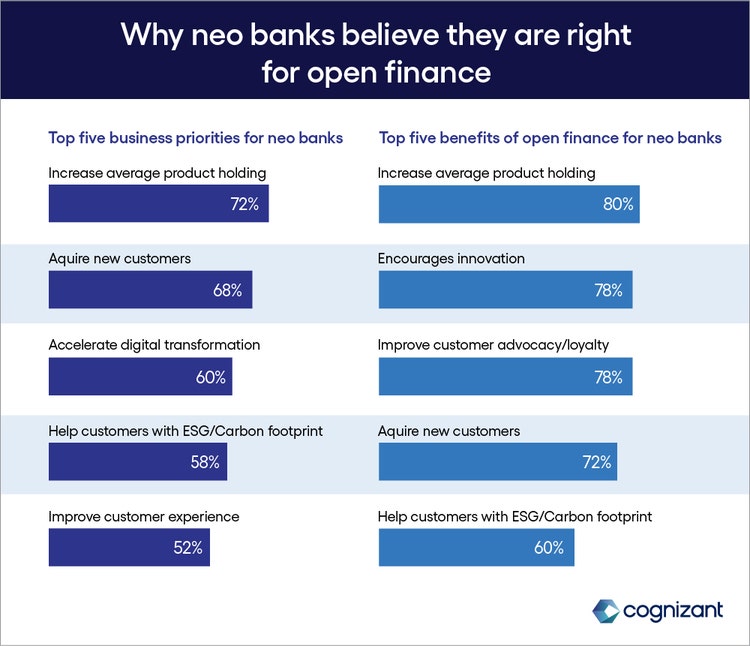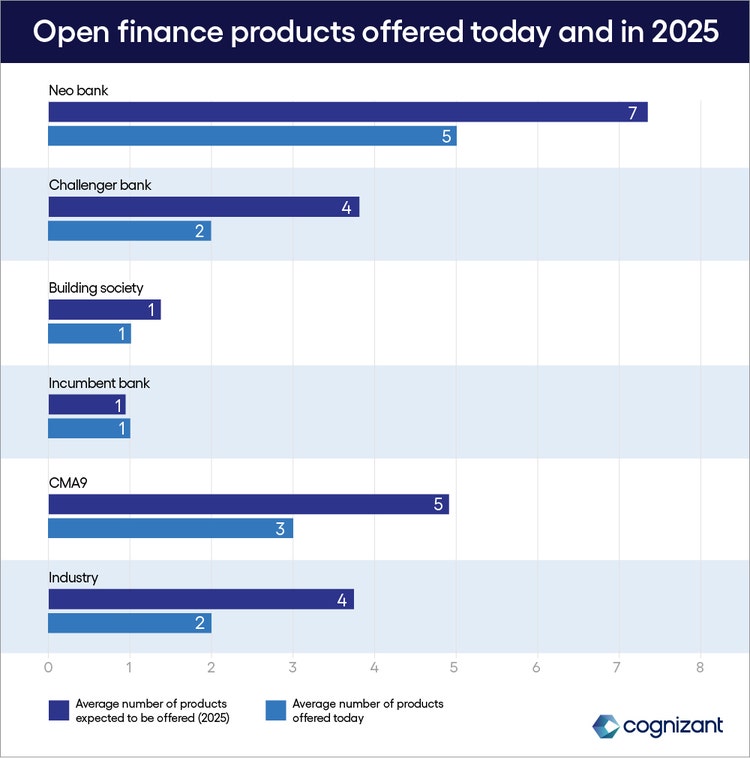
How neo banks can retain their open finance lead styles-h2 text-white
How neo banks can retain their open finance lead
The past six months have seen a surge in dialog surrounding the purported value of “open finance” and whether or not its potential has been realized in the UK. We see open finance as the natural evolution of finance—a collection of standards, technologies and organizations that enables consumers to access reimagined credit, asset management, insurance and pension products with greater ease and transparency from a range of bank and non-bank suppliers.
While the debate has stoked critical thinking around what financial institutions can hope to achieve through open finance, large questions remain around the potential benefits still on the table.
To better understand how financial institutions are approaching open finance, between April and July 2022, we surveyed over 200 decision makers with responsibility for open finance within their organizations. Respondents were drawn from a representative cross-section of leaders from within the CMA9, building societies and incumbent, challenger and neo banks.
Through our research, we discovered a paradox in financial institutions’ approach to open finance. The paradox is two-pronged: First, there’s a marked inconsistency in the models that different financial organizations are using to align with the concept; second, business and investment priorities are frequently misaligned in areas where open finance could help institutions achieve their goals.
In this series, we explore the differing priorities, strategies and opinions among financial institutions to investigate the current state of play and the likely direction of travel—whether they’re confidently embracing open finance or reluctantly doing the bare minimum to comply with regulation.

“The main driver for our open finance strategy is the ultimate user experience. With an easy and intuitive platform, the consumer will have more trust in spending online and be able to do it faster and more easily... Open finance provides us with a plethora of information about the customers who choose to provide their data. We have all of a consumer’s details like spending habits, purchasing power, borrowings, investments and even their research of any financial product or service.” – Chief Risk Officer, UK neo bank

“We have curated a strategy that focuses on uplifting virtual experiences to the next level by providing fast, simple and data-driven account creation inputs; deploying user-friendly mobile interfaces which make online banking a breeze; smart reporting; simplified international payments; and effective and advanced use of analytics supported by AI and machine learning.” – Chief Risk Officer, UK neo bank
“We have partnered with the best in every domain; the only challenge I foresee now lies in the adoption area. Once people start adopting it at a large scale, we will encounter new difficulties to resolve. Right now, we have enough resources to cater to a small proportion of customers.” – Chief Risk Officer, UK neo bank
